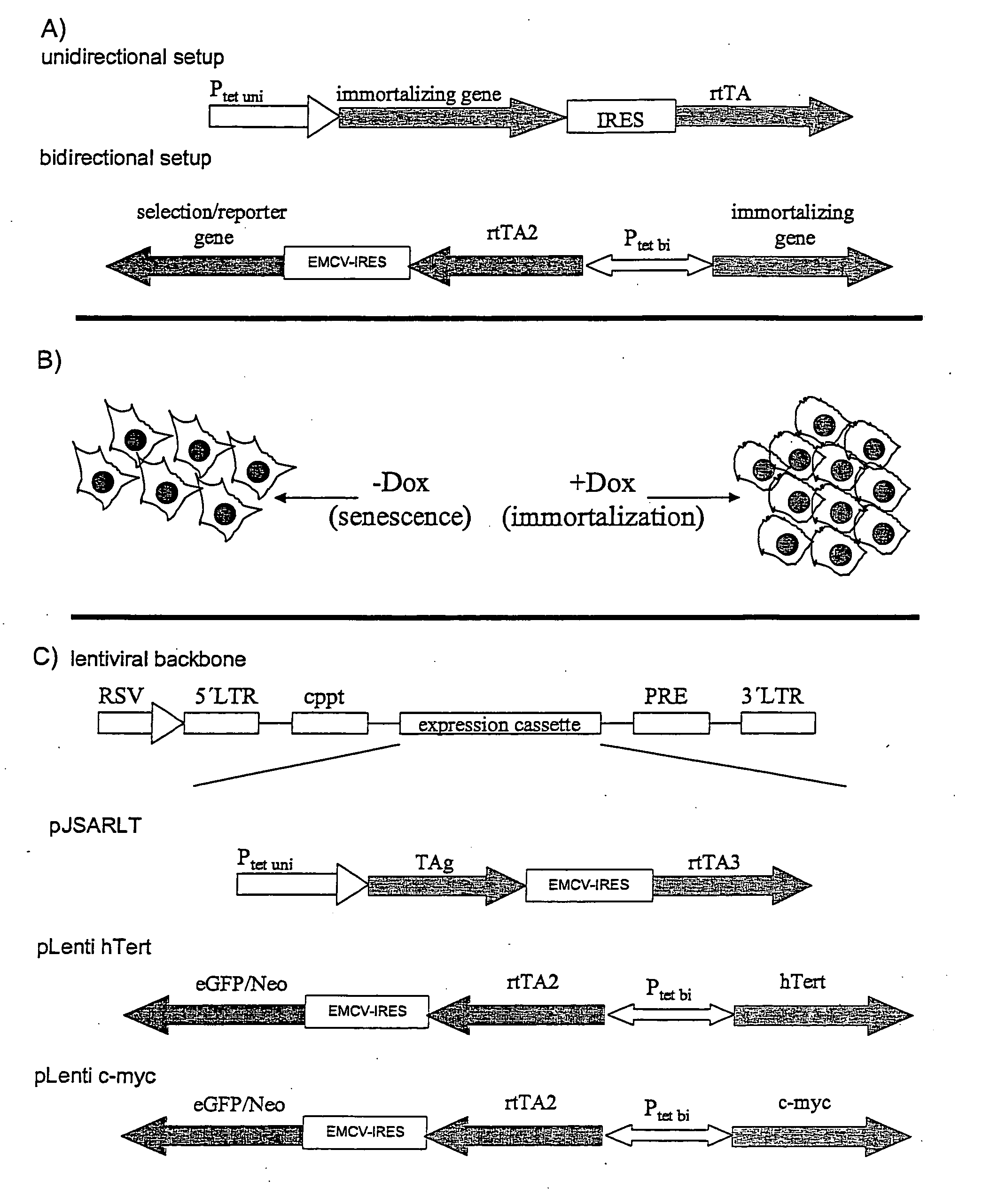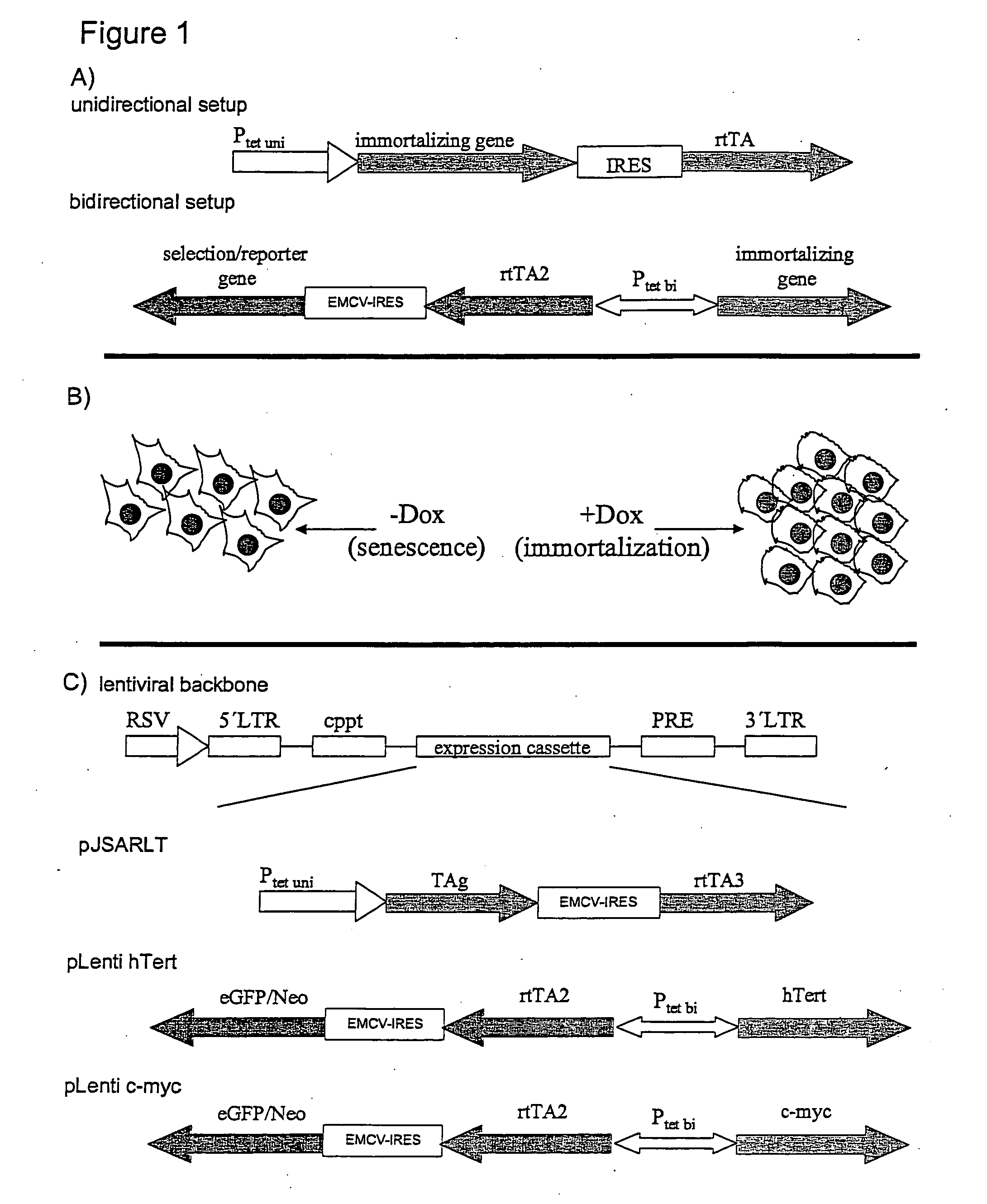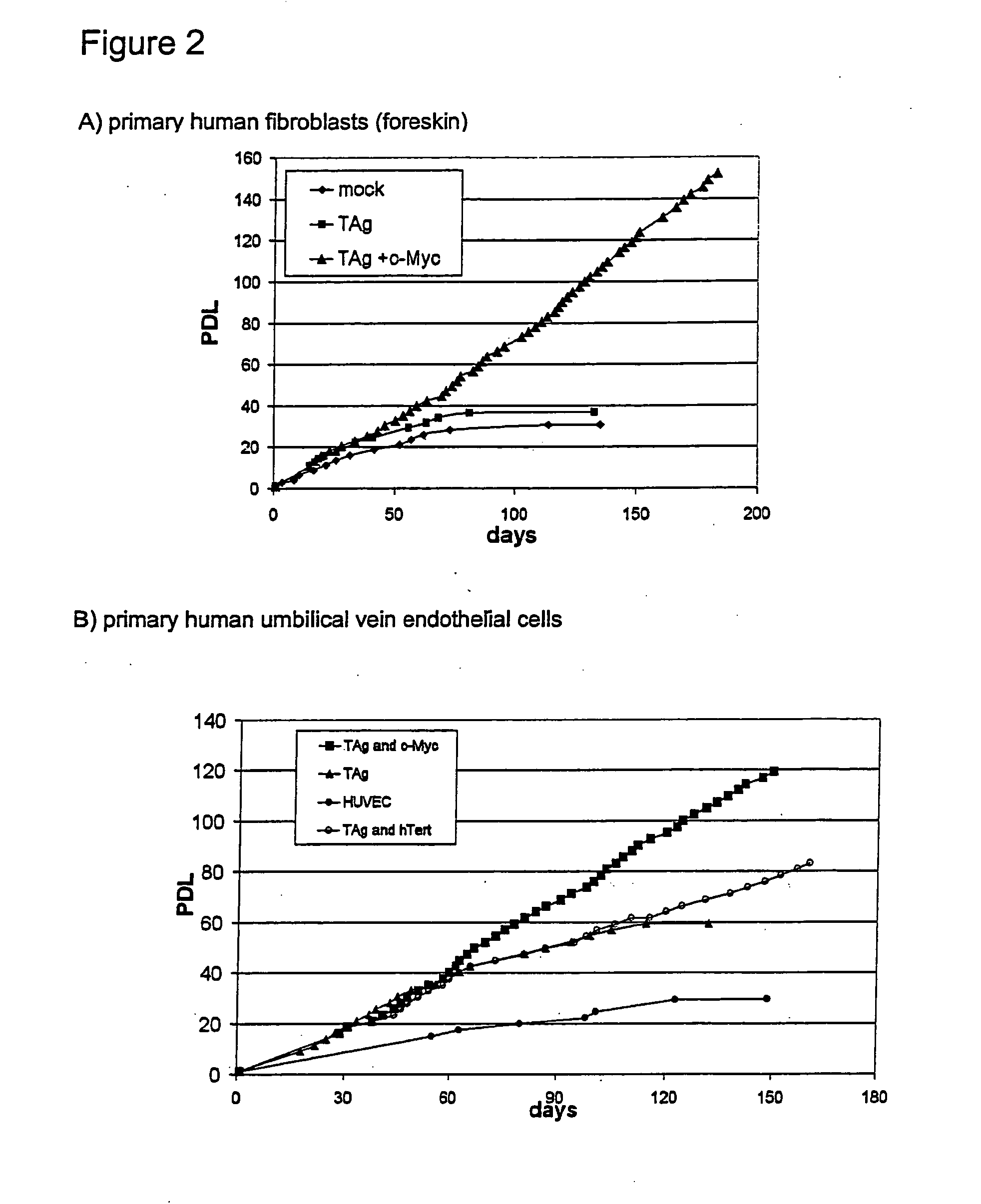With increasing age tissue regeneration and repair is greatly impaired.
On the one hand senescence fights against tumor development, on the other hand it impairs tissue regeneration.
The major barrier for targeted therapies is the complexity of the senescence phenomenon.
This complexity results from the diversity of senescence stimuli that induce a plethora of different signalling cascades.
Furthermore (1) the differences in the senescence programs that are induced in different cell types and (2) the differences between murine and human senescence mechanisms result in an even more
complex system.
These stretches cannot be replicated by
DNA polymerases during replication.
This leads to the “end-replication problem” which means that the cells lose roughly 200 base pairs of
telomeric DNA during every replication phase.
A problem is that this senescence program is in some cell types induced only when the
oncogene is expressed at very high levels.
This raised some scepticism about the relevance of the observed phenomenon.
An issue that complicates the elucidation of the senescence program is that there are marked differences between senescence pathways in different cell types (Zhang et al., 2003, Proc. Natl. Acad. Sci. U.S.A 100: 3251-3256).
Unfortunately, the senescence program between the two species differs greatly in several aspects.
This complexity results in a severe problem.
However, the SA-β-Gal
staining may not be specific and may give results in false positive results.
The main problem of the current senescence research is that a reliable, efficient method for the induction of senescence is missing.
This issue is important as a mixture of senescent and non-senescent cells would complicate if not render impossible the elucidation of the senescence
signalling pathways.
However, all systems have major drawbacks which make them suitable only for very special questions.
The disadvantages of this method are that it is very time-consuming and very laborious as the primary cells have to be cultivated and maintained over several months.
Secondly, this method relies on the availability of primary cells which is a problem for certain
human cell types like rare or difficult to maintain cells.
Thirdly, the method of serial passaging is limited as the senescence induction is due to
telomere shortening and the induction stimulus cannot be exchanged or converted.
Fourthly, serial passaging does not induce homogenously senescence as the primary cells are a mixture of proliferating and senescent cells.
The disadvantages of this
system are that it is fixed to the senescence
inducer p21.
Another problem of this method is that it can only be applied to already established (tumor) cell lines which limit its application.
However, similarly to serial passaging the induction of senescence by this method is laborious,
time consuming (>100 days) and inhomogeneous.
Another important drawback of this technique is that for the induction of senescence a second genetic modification of the immortalized cells is required.
Since such efficiencies are difficult to obtain complex and time-consuming selection processes have to be performed to yield a purified
senescent cell culture.
That is, after excision of hTert, it is not possible to revert the
senescent cell back to the proliferating stage of the immortalized cells.
Another
disadvantage is that for the senescence induction a complex regulation process has to be performed as the cells have to be shifted from one cultivation temperature (33° C.) to another (39° C.).
Therefore this method is prone to artefacts which stem from the unphysiological culture conditions.
The
disadvantage of this method is that it is restricted for senescence induction in
rodent cells.
The existing methods for inducing senescence have significant drawbacks as mentioned above.
Thereby they raise huge technical hurdles which impede a deeper understanding of the senescence program in human cells.
 Login to View More
Login to View More 


